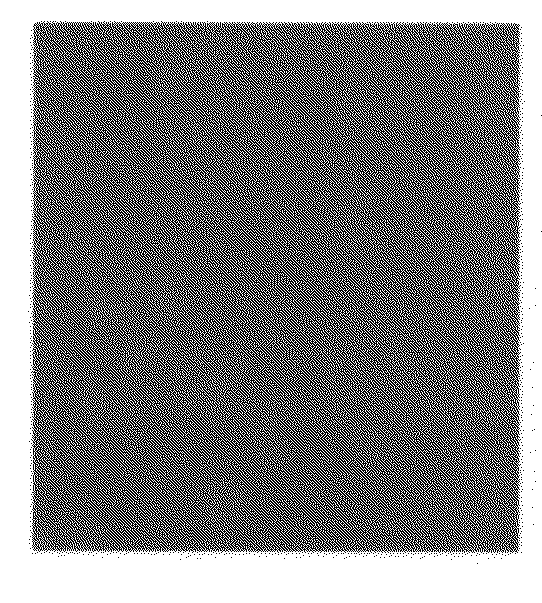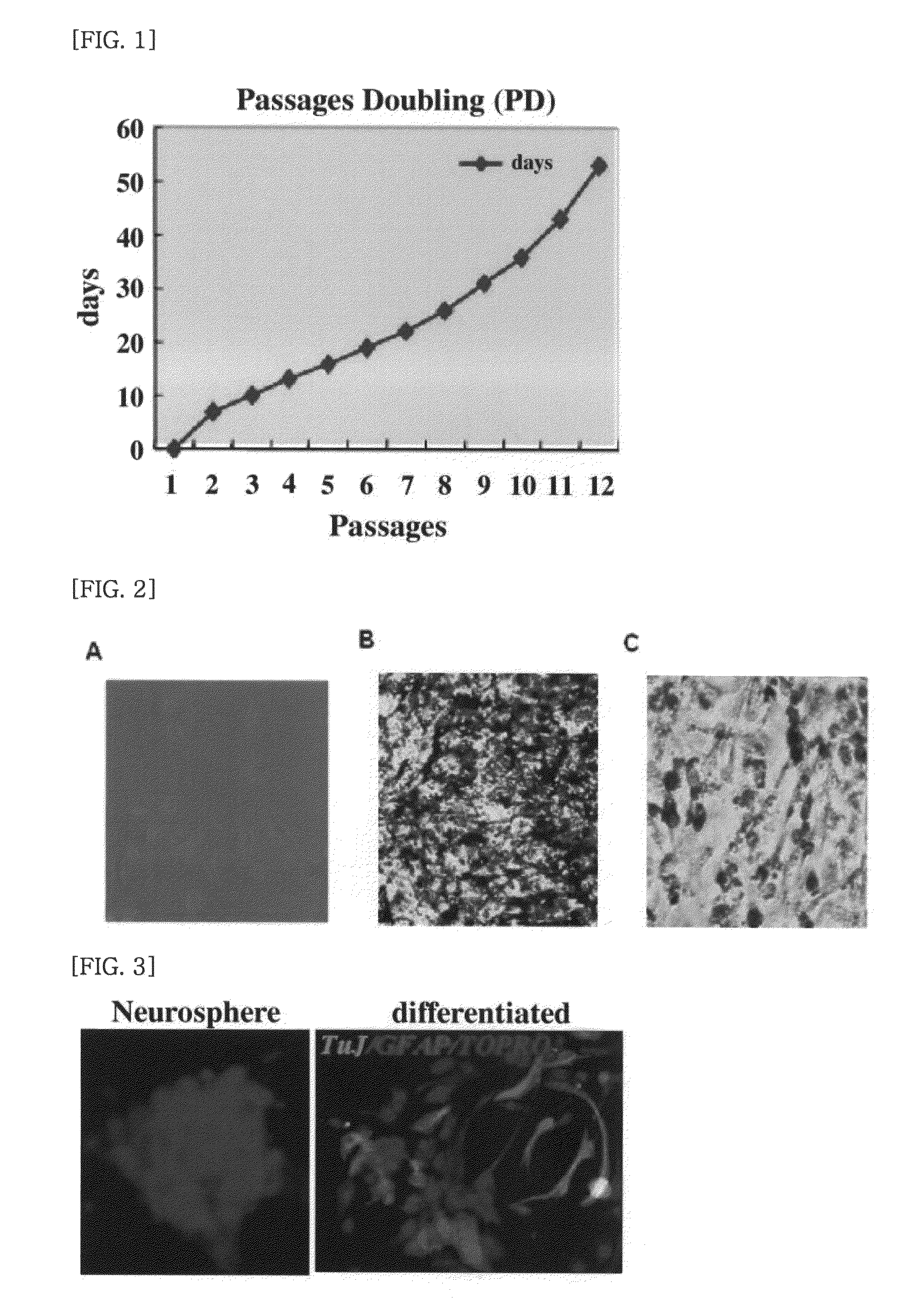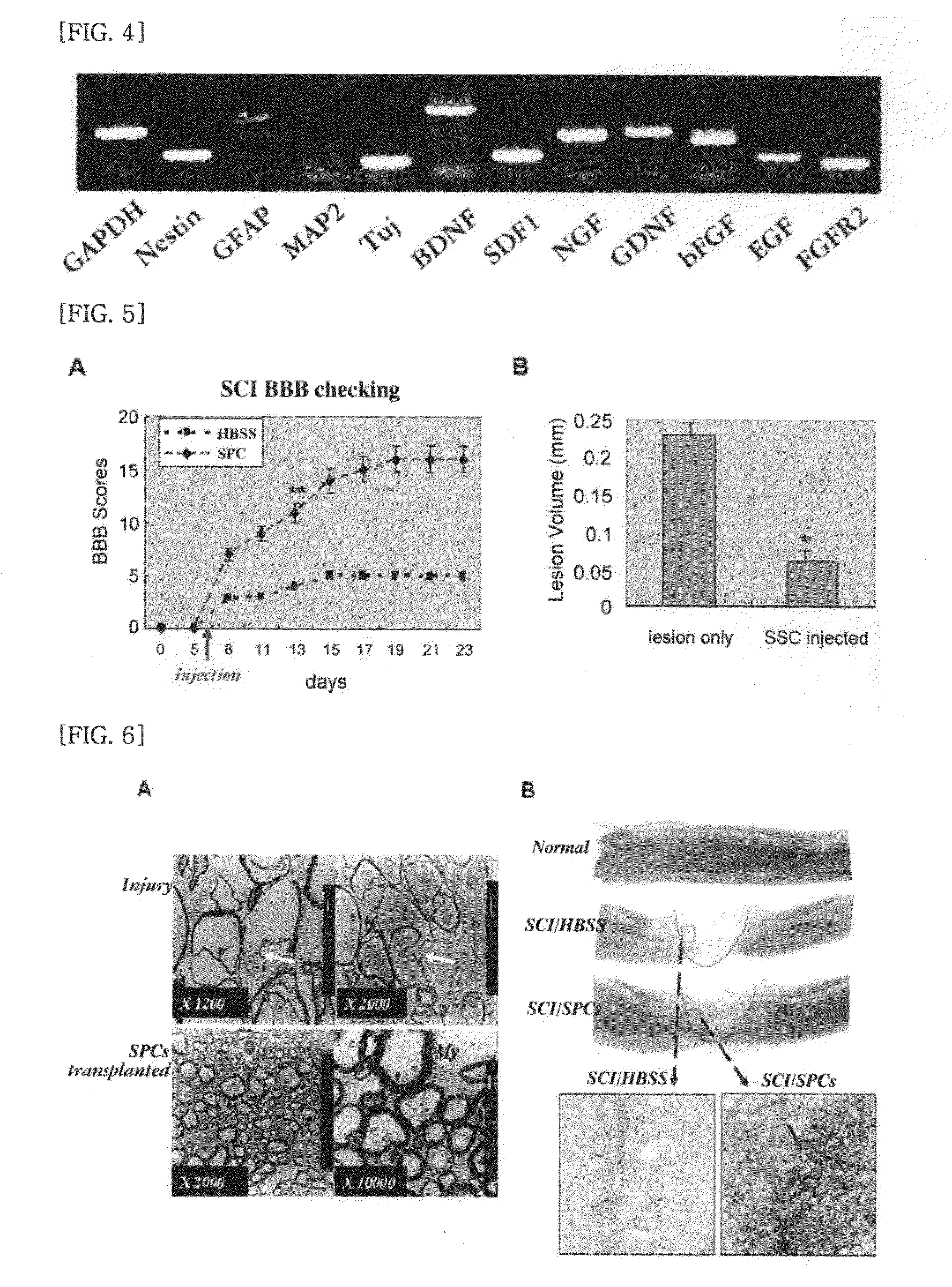Therapeutic cell medicine comprising skin tissue derived stem cell
a stem cell and skin tissue technology, applied in the field of neurodegenerative disorders, can solve the problems of significant disadvantage of mesenchymal stem cells, provoking ethical concerns, and provoking teratoma formation, and achieve the effect of minimizing adverse side effects and high differentiation
- Summary
- Abstract
- Description
- Claims
- Application Information
AI Technical Summary
Benefits of technology
Problems solved by technology
Method used
Image
Examples
example 1
Isolation and Culture of Progenitor Cells from Autologous Skin Tissues
[0034]In order to isolate skin-derived progenitor cells from mice, skin tissues were excised from dorsal and ventral epidermis skin of 6-week-old ICR mice (Hyochang Science, Korea). Subcutaneous fat was removed from the thus-obtained skin tissues which were then washed with phosphate buffered saline (PBS).
[0035]0.075% collagenase was added to the subcutaneous fat-removed skin tissues, and the resulting mixture was reacted at 37° C. for 30 min to isolate cells from the skin tissues.
[0036]α-Dulbecco's Modified Eagle's Medium (DMEM) containing 10% FBS (fetal bovine serum) (GIBCO, USA) was added to the cell fluid that completed the reaction, followed by centrifugation. The stromal cell layer was suspended in DMEM containing 10% FBS and cultured for 48 to 72 hours until the primary culture cells reach a cell density of 70 to 80%. Then, passage culture was carried out using a 0.025% trypsin solution, thereby obtaining s...
example 2
Differentiation Capability of Skin-Derived Progenitor Cells into Mesodermal Cell Lineages
[0038]In order to investigate whether the skin-derived progenitor cells obtained in Example 1 are capable of differentiating into mesodermal cell lineages such as adipocytes, osteocytes and chondrocytes, the skin-derived progenitor cells were cultured to differentiate into a specific cell type in a differentiation medium that induces tissue-specific differentiation of cells.
[0039]In order to ascertain the adipogenic differentiation capacity of the skin-derived progenitor cells, the cells were cultured to differentiate into adipocytes in an adipogenic differentiation medium containing adipogenic factors, e.g. insulin (Sigma, St Louis, Mo., USA) and dexamethasone (Sigma, St Louis, Mo., USA). In order to confirm the osteogenic differentiation capacity of the skin-derived progenitor cells, the cells were cultured to differentiate into osteocytes in an osteogenic differentiation medium containing ost...
example 3
In Vitro Neurogenic Differentiation of Skin-Derived Progenitor Cells into Neural Cells
[0042]In order to use the skin-derived progenitor cells of Example 1 as a cell therapeutic agent for the treatment of spinal cord injury (SCI) which is one of demyelinating diseases, the differentiation capacity of the skin-derived progenitor cells into neural cell lineages was examined.
[0043]To induce formation of neurospheres of cells, the skin-derived progenitor cells were suspension-cultured in the neuronal differentiation medium consisting of a Neurobasal medium (Gibco, Rockville, Md., USA) supplemented with B27 (Gibco, USA), 10 μg / mL of BDNF (Brain-Derived Neurotrophic Factor, Sigma, St Louis, Mo., USA) and 20 μg / mL of bFGF (basic fibroblast growth factor, Sigma, St Louis, Mo., USA) for 4 days. The thus-formed neurospheres were spread on substrate-coated culture dishes, and the differentiation efficiency of the neurospheres into the oligo cells was examined.
[0044]The evaluation of differentia...
PUM
| Property | Measurement | Unit |
|---|---|---|
| concentration | aaaaa | aaaaa |
| concentration | aaaaa | aaaaa |
| thickness | aaaaa | aaaaa |
Abstract
Description
Claims
Application Information
 Login to View More
Login to View More - R&D
- Intellectual Property
- Life Sciences
- Materials
- Tech Scout
- Unparalleled Data Quality
- Higher Quality Content
- 60% Fewer Hallucinations
Browse by: Latest US Patents, China's latest patents, Technical Efficacy Thesaurus, Application Domain, Technology Topic, Popular Technical Reports.
© 2025 PatSnap. All rights reserved.Legal|Privacy policy|Modern Slavery Act Transparency Statement|Sitemap|About US| Contact US: help@patsnap.com



